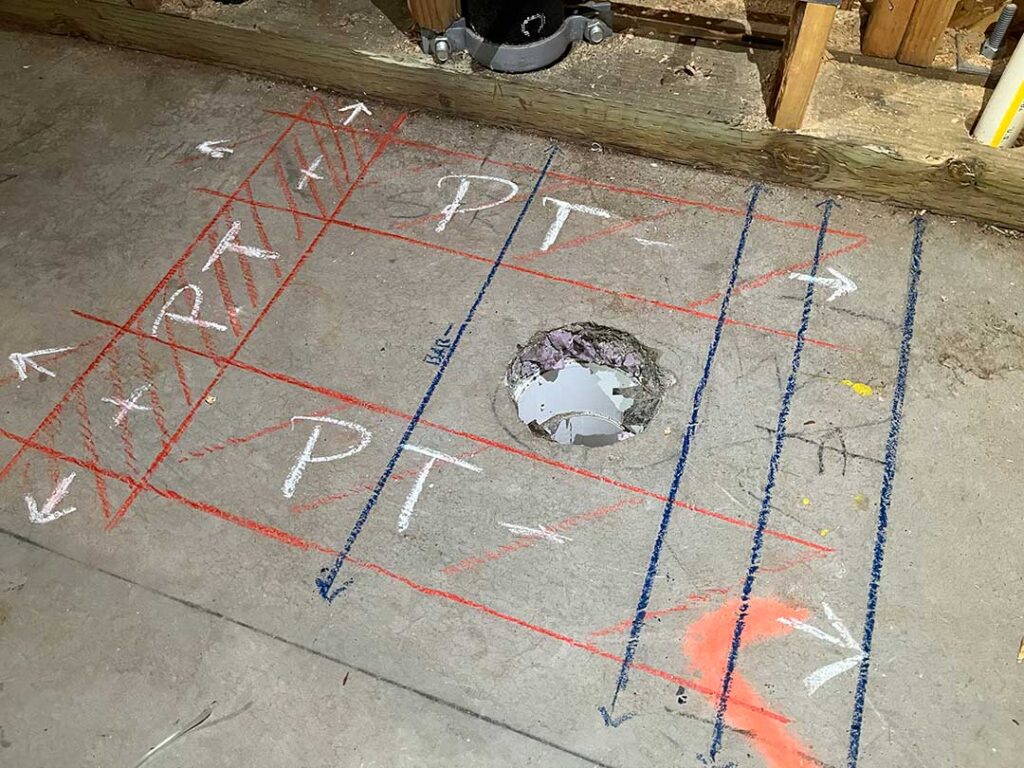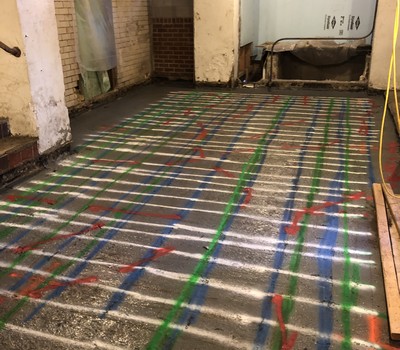Why Concrete Scanning Is Vital for Making Certain Safety and Accuracy on Work Sites
In the realm of building and construction and infrastructure advancement, making certain safety and accuracy within work websites is extremely important. One essential component that frequently goes overlooked however plays a significant role in attaining these goals is concrete scanning. This method gives a look below the surface area, uncovering surprise threats and blockages that can restrain progress and endanger the safety of workers and the architectural stability of the task. By utilizing concrete scanning techniques, specialists can preemptively resolve prospective dangers, enhance job preparation, and inevitably produce a safer and a lot more efficient job environment. The ramifications of ignoring this vital step can be pricey, not just in regards to monetary setbacks yet additionally in threatening the health of those entailed in the building procedure.
Relevance of Concrete Scanning

Failure to carry out complete concrete scanning can result in expensive damages, project hold-ups, and, most notably, safety and security dangers for workers on-site. Inadvertently striking an energy line or an architectural part can bring about mishaps, injuries, and even deaths. Consequently, investing in concrete scanning services is a positive step to reduce these risks and ensure a smooth construction process.
Hidden Hazards Detection
Efficient detection of concealed risks is vital for making sure the safety and security and performance of building tasks. RainierGPR Concrete Scanning. Covert dangers can pose significant dangers to workers, equipment, and the overall success of a job if not recognized and addressed immediately. Usual covert dangers on task sites include below ground energies, rebar, post-tension cables, and various other obstructions that can result in crashes, delays, and expensive problems if inadvertently struck during building activities
By utilizing innovative concrete scanning innovations such as ground-penetrating radar (GPR) and electromagnetic induction, building teams can accurately map and find out surprise hazards under the surface area before excavation or exploration starts. This proactive approach not only boosts security by preventing crashes however likewise enhances task efficiency by lessening unexpected interruptions and remodel.
Additionally, the very early detection of surprise risks enables project supervisors to establish ideal safety methods, carry out targeted reduction techniques, and allocate resources effectively to minimize threats and ensure a smooth construction procedure. Prioritizing hidden threats detection with concrete scanning is vital for preserving a safe and secure work environment and accomplishing project purposes without compromising safety and security or precision.

Accuracy in Job Planning
Discovery of covert risks with advanced modern technologies lays the structure for precision in task planning within the building and construction market. By using concrete scanning techniques, construction groups can properly map out the place of prospective challenges or threats concealed under the surface area. This info is vital for project planning as it enables the advancement of precise techniques to navigate around these threats, reducing the threat of delays and mishaps.
Accuracy in project planning is important for making sure that construction projects are completed on schedule and within spending plan. By incorporating information gotten from concrete scanning right into the preparation phase, construction teams can produce detailed routines, recognize prospective obstacles, and designate resources much more successfully. This aggressive technique not only enhances safety and security at work site yet also boosts overall project efficiency.
Furthermore, accurate job preparing reduces the probability of pricey rework or style changes, as prospective challenges are recognized and addressed early while doing so. Ultimately, the usage of concrete scanning technology adds to achieving better accuracy and success in building and construction project execution.
Enhancing Security Steps
Incorporating advanced security procedures is important for keeping a secure job setting on building and construction sites. Enhancing safety actions is paramount to avoid crashes and make certain the wellness of employees when it comes to concrete scanning. Utilizing sophisticated innovations such as ground-penetrating radar (GPR) and electromagnetic induction, construction groups can recognize potential risks below the surface before commencing any type of excavating or exploration their explanation activities. These devices allow employees to find rebar, post-tension cable televisions, and various other obstructions hidden within concrete frameworks, minimizing the danger of unintentional strikes that can result in structural failures or injuries.
In addition, executing proper safety and security methods, carrying out regular security training sessions, and offering workers with personal protective devices (PPE) are important elements of boosting security steps on work websites. By cultivating a safety-oriented culture and advertising caution among employees, building and construction business can substantially minimize the possibility of office events and support high security requirements throughout the job period. Eventually, prioritizing safety and security not only safeguards personnel yet also adds to the general success and performance of building undertakings.
Guaranteeing Job Site Efficiency
Building upon the structure of improved security procedures in concrete scanning, maximizing task website effectiveness ends up being critical for the smooth implementation of building tasks. Making sure task website effectiveness entails enhancing procedures to optimize performance while maintaining high requirements of high quality and security. One crucial element of improving efficiency is the use of sophisticated technology such as ground-penetrating radar (GPR) and electromagnetic induction to accurately find energies and possible risks below the surface before building and construction commences. By recognizing these aspects at an early stage, job delays due to unforeseen blockages can be lessened, causing smoother job timelines and price savings.

Clear delegation of jobs, routine development updates, and effective problem-solving techniques can help prevent misunderstandings and keep the task on track. Inevitably, by focusing on performance together with safety in concrete scanning techniques, building tasks can be finished a lot more efficiently and efficiently.
Final Thought
To conclude, concrete scanning plays a critical function in making certain security and precision on work sites. By identifying covert hazards, improving accuracy in task preparation, improving safety and security actions, and guaranteeing task site performance, concrete scanning assists to stop mishaps and minimize risks (RainierGPR Concrete Scanning). It is a vital device for building and construction jobs to preserve a safe workplace and make certain the successful completion of tasks
Failing to conduct complete concrete scanning can result in costly problems, job delays, and, most significantly, safety and click here for more security dangers for workers on-site.Moreover, applying appropriate security procedures, performing routine safety and security training sessions, you can find out more and giving workers with individual protective equipment (PPE) are indispensable elements of improving safety and security actions on task sites.Building upon the foundation of enhanced safety and security measures in concrete scanning, maximizing work website performance ends up being important for the smooth execution of building jobs. Ultimately, by prioritizing efficiency together with security in concrete scanning methods, building and construction jobs can be completed a lot more successfully and efficiently.
By discovering concealed dangers, enhancing precision in project planning, enhancing safety actions, and making sure task site performance, concrete scanning assists to protect against accidents and lessen risks.